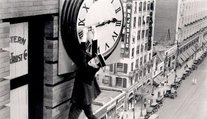 Without a doubt, Home Office is a significant trend in America that is here to stay. This trend started more than 25 years ago and has consistently grown from year to year. And, while most people that DON’T office from the house think this is nirvana, there is much more to it than that. I have been Officing at home for the last 5 years and thought I would share some tips on how I make it work for me. Here are the 7 things you must to do to successfully Office At Home. 1.Get dressed for work. That’s right, don’t go to work in your PJs, gym shorts, tennis shorts, sweat pants or anything else you would not wear if you were going to an office outside of home. Getting dressed for work changes your attitude of what you are doing in your Home. For the next 8 hours (or whatever period of time you are going to work) you are at work. If you are dressed for work you are much more likely to be productive. 2. Go To Work! While this sounds like an obvious piece of advice many people that office at home don’t…”Go to Work”. You should have a set time that you plan to be at your desk and a set time when you are home. Both getting to the office and leaving the office are important. If you just kind of wander into the office your attitude will be sort of lackadaisical just like it would be if you merely just wandered into your office outside of your home. To successfully Office at Home you MUST get your attitude correct. You must not think of yourself as being at home, but that you are in your place of work. This leads us to rule number 3. 3. While you are in your Home Office be at Work, not at home. When you are in your home office don’t answer the home phone or the front door. Don’t do the little things like taking out the trash, running errands, taking the kids to school, or community events. You are at work. If you were in your other office you wouldn’t do any of these interruptions, don’t do them at your home office. Explain to your family that, while you are at home, you are actually at work. Be tough minded about this because it is important. It will be difficult at first but make the commitment. Your output with jump. 4. Create a work space. Find a space in your house that is just yours. A desk and a chair are preferable, but each home is different. The best place is an office with a door. It should be a place that can be isolated from the rest of the house. You are at work and this space should help you be at work. 5. Set goals. Your day will be much more productive than if you were at the office so you will need to create new more aggressive goals for yourself. You won’t have the distractions of the office environment so you will have more time than ever. If you set reasonable goals for yourself you will see your success rate climb. Make sure you look at your goals daily. Put them up on your office wall so you can keep them handy. 6. Avoid Isolation. One of the biggest traps of working from home is Isolation. Every couple of hours take a bit of time and reach out to a colleague that is also officing at home. Put together a list of people from work that you can take a break with. Don’t talk about work with them. Talk about sports, family, politics, world events, or food. Work to create an office environment with your work partners. Isolation is perhaps the biggest threat to your successful home office. Fight it with the same tenacity you use with all of your other business problems. 7. Communicate. When you office at home you are not in view of the company. You have to make a special effort to let your team know what you are doing. Make a weekly report to your direct supervisor. If you are leading a team of people that work from home make sure to have them communicate their weekly activity and share it with the office. If you or your team has a win, make sure it is communicated to the company. You are not in the office, so if you don’t take the time to do this you will be forgotten by some. If the company is sponsoring an event, make every effort to attend the event. If you cannot attend the event figure out another way to get involved. Send a note to the team in the office to let them know you are thinking of them. Officing from your home gives you incredible flexibility. You don’t have to spend time in your car commuting. You don’t have to disrupt your family and move to a new community for a new job. You can have flexible hours that can give you a better work/life balance. So if you can follow just seven simple suggestions you can increase your chance of success. To increase your chances of sales success give us a call and see how we are helping B2B sales organizations achieve their goals.
1 Comment
 There is a difference between training and educating and the good retailers and restaurants are paying attention to that difference. To think of this business problem in the simplest terms, you train a dog and you teach a person. Pretty simple to understand, but there is a lot behind this simple thought process. Why would you simply train a dog instead of teach them? Well, and I am sorry dog lovers, but we don’t expect dogs to reason and figure out what the proper thing to do is in a particular situation. However we do expect dogs to be able to repeat a behavior given the proper reward; love, food, toys, affection. For instance, when we had a Cocker Spaniel we were able to teach him to sit, stay, lie down, shake hands, and roll over if we had a pancake in our hands. (Perhaps he trained us to have pancakes in our hands). We repeated this behavioral training with Joey every Sunday because that is when we made pancakes. He got to be very good at all of his commands, and eating pancakes. However, Joey never learned why we did these commands, how to make pancakes, or what ultimately the family unit was trying to get from him doing these commands. He was trained but he was not taught. We taught our children the importance of looking both left and right before they crossed the street. We told them the positive consequences of looking around and the negative consequences of not looking around. We then talked about how we could apply this same lesson to other parts of life and LISTENED to how they responded. We corrected their course if they made a mistake and continued to ask them questions about their answers so they could teach themselves the why. Our kids have grown to be productive thoughtful adults and seem to be making good decisions because we (mostly my wife) realized the importance of teaching our children and not just training them. Well, how many retailer and restaurants have training departments today and how many have education departments? When I started in retail the best education programs were with the department stores. They took the time to teach their buyers by putting them on the sales floor. These are the people that, today, are the merchants of all of the great retailers in the US. They got an education by listening to both the customers and the buyers. They understood the “whys” of how things were done before they actually had to do them. But I continue to hear that retailers are putting in this new training program or that new training program. And these programs work for what they are designed to do. They train people to run the new POS system. They train people to put together a new “set” in a store. People are “trained” on how to make a sandwich, cup of espresso, or how to answer the phone. (Lewis Kornfeld TAUGHT us how to answer the phone in one of his Flyer Side chats in the 1970’s and I have never forgotten the lesson!) Take the time to teach the “Y.” If all you want to do is train, and then train the same thing again, don’t bother with the Y. You will have full time employment because you will get to teach the next group of new hires and the next one after that ad infinitum. However, if you understand the importance of your employees learning to think through a problem with a good base of knowledge, then take the time to Teach The Y. My second year as a Regional Manager I had about 150 stores and 6 District Managers I was responsible for. We were all paid on the financial success of the stores with no limit on the up side. So, with each DM in tow, we went and visited each and every store with a P&L and a voided blank check. At the first store in each district I sat down with the DM and the store manager and worked with them to project their sales for the upcoming year. We also worked on the expenses of the store because the store manager got paid on the net profit of the store. We taught the store manager how he could affect his net pay through increased sales and good expense control. And at the end of the session we had the store manager write his bonus check and pin it on his bulletin board. Riding from the first store to the second store the DM and I discussed what had just happened and how the DM could use that experience in the future. At the next store the DM ran the show with the store manager and me standing in the background. This was then done in every store in the district and every store in the region. While certainly not perfect, our group of store managers came to LEARN how P&L’s worked and how they could personally benefit from running THEIR business. Which was the purpose of the lesson? If, through knowledge, we could intellectually transfer ownership of the store to the store manager, then we would have an optimally running operation for years to come. It worked, by the way, as the region was the top region in the US earning store managers, DM’s, and RM’s record profits and earnings. So Take The Time To Teach The Y in everything you are doing. It will build your profits, improve morale, and deliver to you a sense of satisfaction you will cherish the rest of your life. |
AuthorRich Hollander is a retail expert with over 40 years in the industry. Archives
September 2021
Categories |
© Copyright 2016 Axcelora, LLC.
All rights reserved.
All rights reserved.

 RSS Feed
RSS Feed